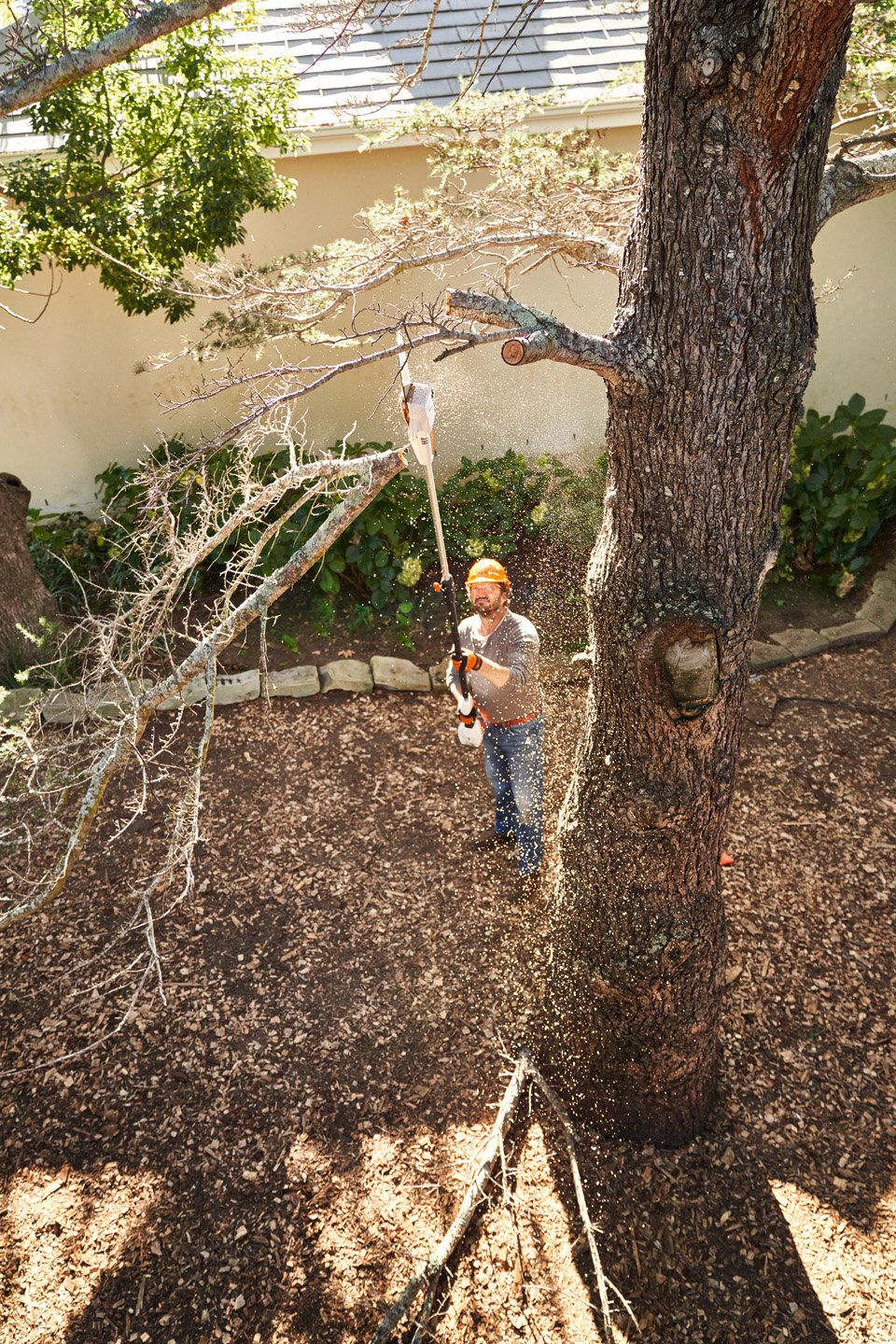This month Stihl have launched their brand new HTA 50, the first cordless pole pruner available in the STIHL AK System. The HTA 50 makes light work of thinning out shrubs, pruning fruit trees or removing dangerous branches in the garden, all from the safety and comfort of the ground.

The STIHL HTA 50 cordless pole pruner forms part of the AK System, a range of cordless tools specifically designed for homeowners. The recommended STIHL AK 20 battery can be used in a wide range of other battery-powered tools such as lawn mowers, grass trimmers, a chainsaw and much more giving you maximum versatility with only one battery. And if you already own a STIHL AK System battery and charger, you can of course buy the HTA 50 pole pruner tool on its own.
The total length of the HTA 50 is 280cm, but this can be extended to 330cm with the HTA shaft extension. Easy controls and a rubberised grip on the handle tube allow for a comfortable working stance and good control whilst cutting. The shaft splits in half for easy transport, and a storage bracket is included meaning the STIHL HTA 50 can be stored tidily on your garage or shed wall. Splitting the shaft also make sharpening the chain much easier, as it’s more practical to fit the guide bar into a vice.
The chain is driven directly by the motor in the cutting head. This provides excellent torque for reliable cutting performance, and also cuts down on weight and vibration due to the lack of a drive shaft. The branch hook is ideal for pulling down smaller branches suspended in the tree canopy so you can clear the way for pruning other branches. The chain oil tank has a handy inspection window to keep an eye on the oil level. You should check this every time the battery is recharged and top it up as necessary. Finally, the side-mounted chain tensioner makes looking after the guide bar and chain easy, as all that’s required is a flat head screwdriver or the tool supplied in the box.

So the Stihl HTA 50 battery-powered pole pruner is the ideal choice for homeowners with trees to maintain, but if you have a larger trees to prune, you could also look at the pole pruners in our AP System of tools. The STIHL HTA 86 or HTA 135 have a total length of 390cm and 405cm respectively (compared to 330cm for the HTA 50) so they can cope easily with pruning higher branches. If you’re a professional user, or will consistently be cutting through larger branches, the HTA 135 is the most powerful cordless pole pruner model on offer and will help you get the job done more efficiently.
How to use a Stihl pole pruner safely
A helmet is the most important item of personal protective equipment (PPE) to wear when using a pole pruner due to the likelihood of falling branches and debris. Safety glasses are also essential for protecting your eyes from falling sawdust, leaves and twigs. Hard-wearing gloves and sturdy workboots are recommended too. As the HTA 50 pole pruner is so quiet it’s not necessary to wear ear protection and cut protective trousers are not a requirement when using pole pruners either.
The user manual supplied with each machine has detailed instructions on safe working practices and all manuals can be found on our website so you can access instructions even if you lose the manual. Some of the most important considerations for pole pruner use are as follows:
- Never cut directly overhead. The pole pruner should never exceed a 60° angle from the ground.
- Be aware of surroundings. Electric cables, power lines, bystanders, animals or any potential risk must not be within 15m of the pole pruner when in use. If the ground is uneven or sloped, consider how the cut material may move once on the ground.
- Take caution with larger branches. To avoid the branch swinging and posing a risk, cut the branch back in stages, into smaller more managable pieces.
- Never use a broken or faulty machine. If you notice something isn’t quite right, consult the manual or a STIHL Approved Dealer before continuing work.
- Be mindful of kickback, tension and compression. The pole pruner will behave differently depending on the side of the guide bar being used, and the position of the cut along the branch. Take a look at the instruction manual to learn how to best avoid kickback and pinching of the guide bar.

